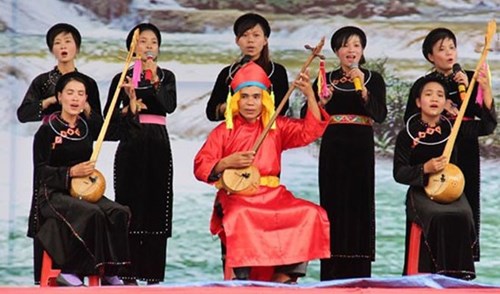Then singing is a form of art combining literature, music and dance and has long been a religious and cultural practice of the Tay, Nung and Thai ethnic groups in the Northern mountainous region of Vietnam during special occasions, such as village festivals. This type of singing is always accompanied by dan tinh (gourd lute) instrument.
This will be the sixth edition of the National Festival of Traditional Then Singing. The festival aims to honor then singers and artistes as well as preserve and develop the practice of Then singing and dan tinh instrument in modern life.
    |
 |
|
Traditional Then singing festival to kick off in May. Photo vietnamtourism.gov.vn |
The festival will provide an opportunity to introduce and popularize unique art forms of the ethnic minorities in the Northwest of the country to both domestic and international tourists as well as showcase the tourism potential of the participating provinces, according to the organization board.
Many activities, including a photo exhibition themed “Then - Tay, Nung, Thai, Vietnam Cultural Heritage”, will be held as part of the festival.
Artisans and art troupes from the Northern, Central and Southern provinces, such as Cao Bang, Thai Nguyen, Dak Lak and HCM City, will perform different types of Then singing.
Then singing is performed during significant events, such as prayer ceremonies for peace, good crops and good health, as well as to bring cheer and drive away sorrows.
Then is said to have originated in the late 15th century during the rule of the Mac Dynasty. Legend has it that in the Mac Dynasty, there were two kings who had special love for music and singing. They developed a handmade gourd lute called dan tinh and established two singing troupes to perform at the royal court. Ordinary people found it interesting and started learning it, preserving this form of singing till date.
Last year, the Ministry of Culture, Sports and Tourism signed a dossier on Then singing practice of the Tay, Nung and Thai ethnic groups of Vietnam for submission to UNESCO for recognition as part of the intangible cultural heritage.
Source: VNA